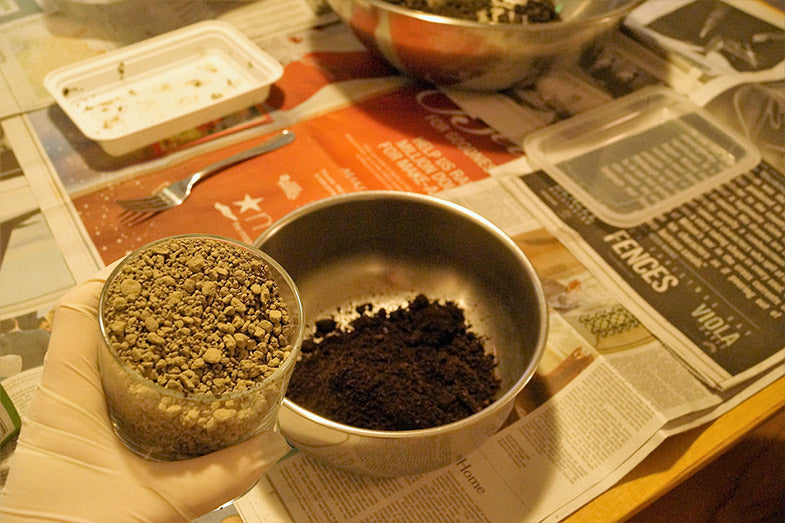
Our latest effort to expand monarch butterfly and pollinator habitats in Vermont: seed bombs
The monarch’s have returned to Mexico and we’re in that annual limbo of Fall weather in New England. So, it could seem odd that we’re talking about growing milkweed in November, but now is actually the perfect time to get your seeds outside for the Spring.
Last spring we tried growing milkweed seedlings. We planted over a thousand seeds, raised them into seedlings and planted them around our Stonehurst Showroom property. The harsh and dry summer, mixed with wildlife curiosity, didn’t bode well for our seedlings. Few took the conditions and our seed harvest this year was vastly smaller than the year before.
That being said, we’re trying something new this year-making milkweed seed bombs.
What is that you ask? I’ll tell you in a step-by-step guide.
First, you’ll need potting soil, clay, milkweed and/or flower seeds, water and space to get a little messy.
 (For the clay we used chemical free, clay kitty litter.)
(For the clay we used chemical free, clay kitty litter.)You’ll first add the potting soil to your mixing bowl.

Then you’ll add equal parts clay.

You’ll slowly add the water, but if you over pour, not to worry, just add more dirt and clay. You’ll know if you added too much water if the consistency is more liquid than solid.

The consistency should have a thick, moist, potting soil feel to it. If you have plenty of seeds, you can add your seeds to the mixture as well. If like us, your supply is short, we’ll tell you what to do in the next step.

You’ll roll the mixture into small seed bombs, similar to the size of a donut hole. If you haven’t already added the seeds, you’ll do this now. We used chopsticks to create a little hole in the ball, we did this two-four times per ball, dropped the seeds in and cover the holes.

Once you’re done, you’ll need to let the balls air-dry until they’re completely dry, 1-3 days.

Once dry, you’ll be able to toss them outside in different places. This will allow the seeds to germinate over the winter in the cold and have a proper habitat when the snow melts and the temperature goes back up.

We’ll keep you updated on our success and if you try this, let us know how it goes. Have a successful growing method? Let us know in the comments!
